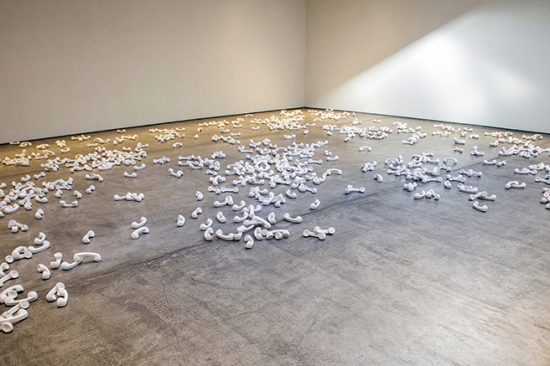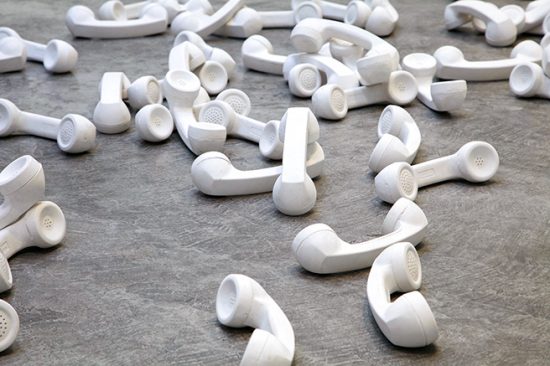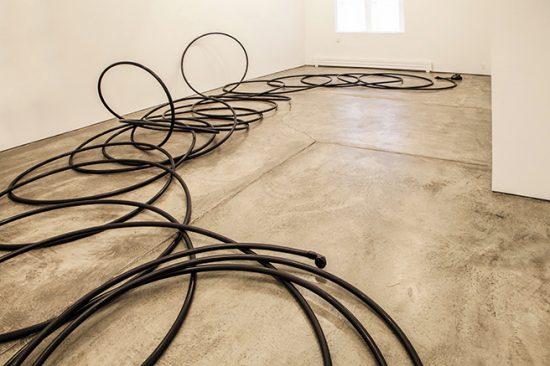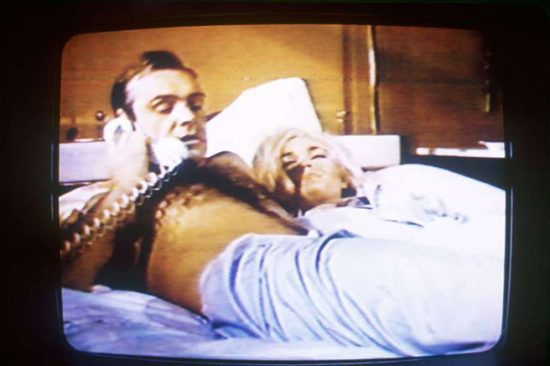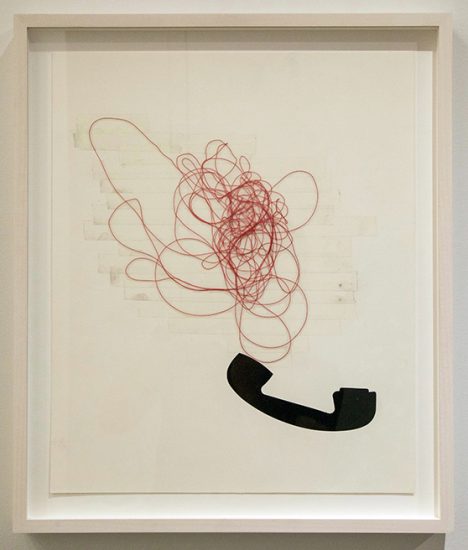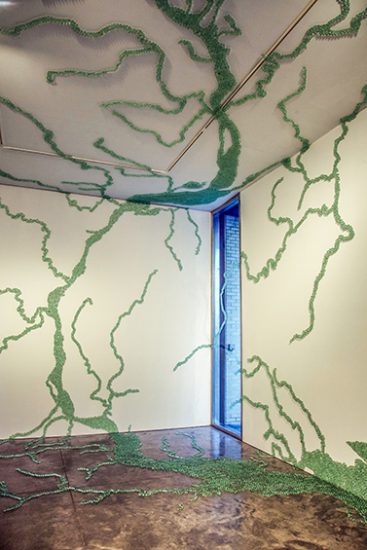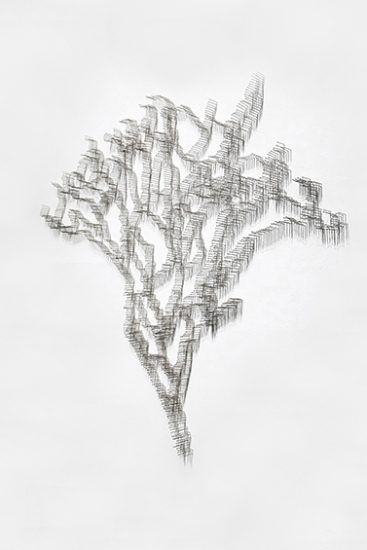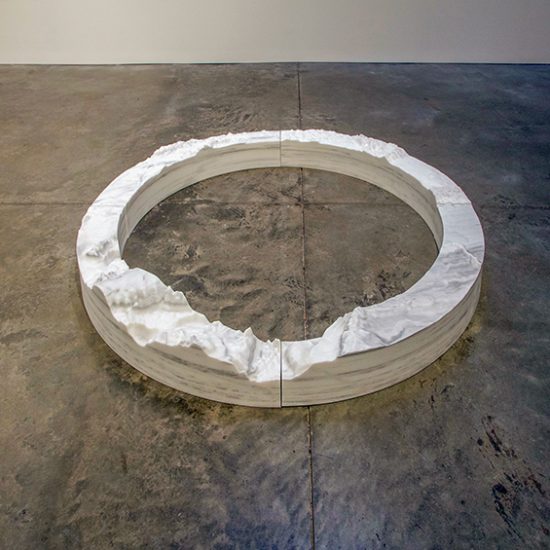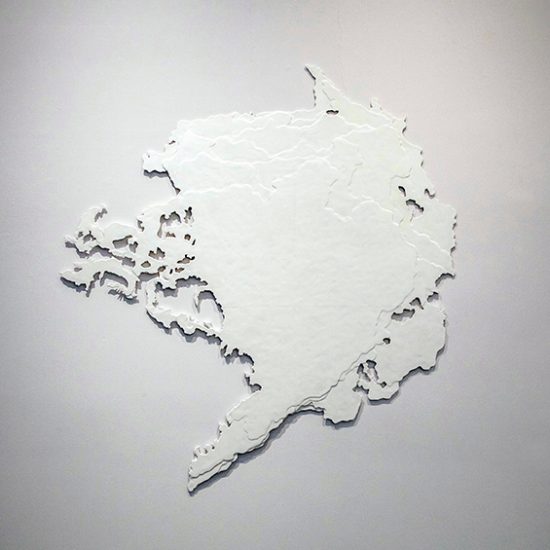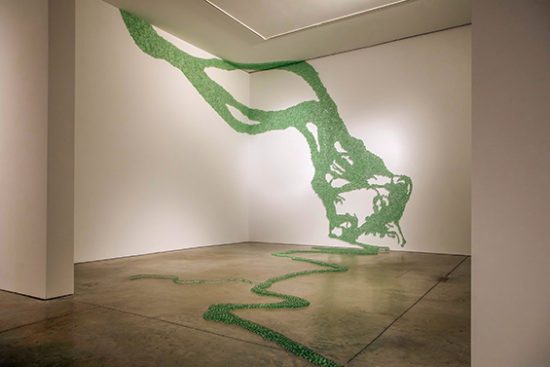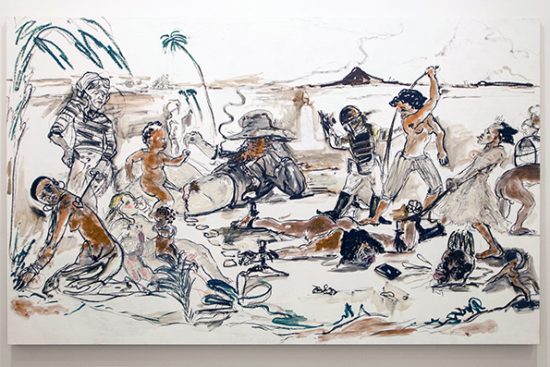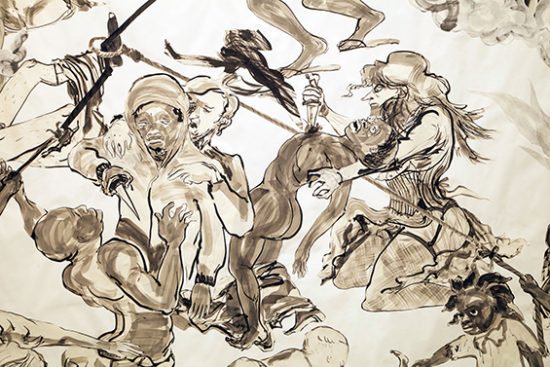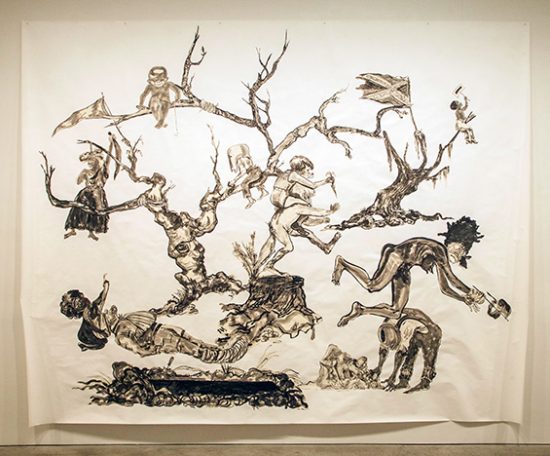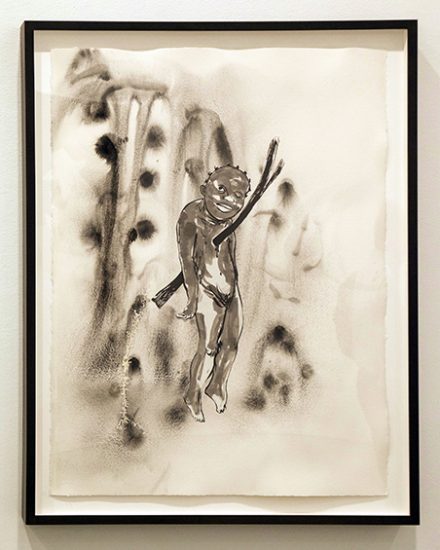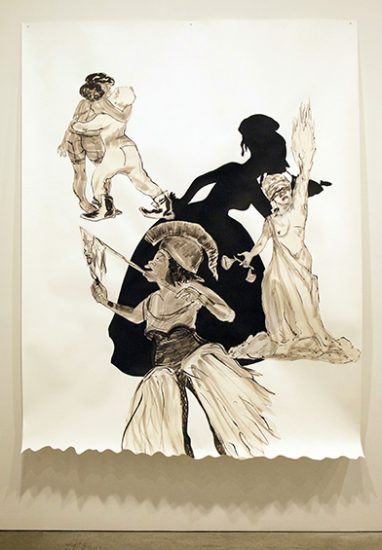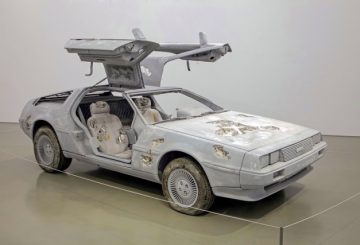From George Shaw, in New York, New York, Land of the Free…
Boneyard, 1990
Boneyard, 1990 (detail)
Extended Phone II, 1994
Telephones, 1995
Untitled, 1994
For decades Christian Marclay has explored connections between the visual and audible. In his show at the Paula Cooper Gallery, the fixed-line telephone, a recurring subject in Marclay’s practice, is re-focused with works from the Nineties, as an inadequate object of communication in today’s world of myriad communication platforms. Boneyard shows 750 hydrostone casts of receivers strewn about like relics from an earlier era. Telephones is classic Marclay: a seven-minute compilation of Hollywood clips in which the narrative builds from rotary dials, phonebooths and salutations to unresolved and awkward goodbyes.
Folding the Columbia, 2017
Where the Water Flows North, 2017
Arctic Circle, 2017
59 Words for Snow, 2017
From One Into Many and Back Into One, 2017
Famous for her Vietnam Veterans Memorial in Washington DC, Maya Lin is an artist and architect with a show at Pace that looks at the elemental phases of water and its natural properties. The works map Victoria Falls, the Nile, the Arctic and Antarctic with materials made from recycled silver, glass marbles, steel pins, and marble. Lin’s dexterity is evident in translating cold scientific data into melancholic sculptures and large installations she prefers to call “drawings,” that eschew drama for the subtlety of capturing water in a moment in time.
Brand X (Slave Market painting), 2017
The Pool Party of Sardanaplus (After Delacroix, Keinholz), 2017
U.S.A. Idioms, 2017
Alive, Not Dead, 2017
Libertine Alighting the World, 2017
Kara Walker’s new exhibition at Sikkema Jenkins is a show of works on paper and linen, drawn and collaged using ink, glue and oil stick. According to Walker they are “neither exhaustive, activist or comprehensive.” However, they are as disturbing and challenging as ever in her portrayal of the bitter legacy of slavery in the United States. The mostly large-scale works combine contemporary and historical subjects in narratives that reflect the current conflation of Neo-Nazi and Antebellum South actions and attitudes in a newly radicalised American present.
